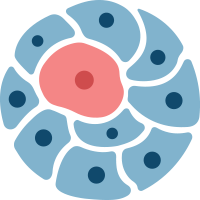
Cancer Stem Cell News
Cancer Stem Cell News is an online resource that curates the top research publications and reviews about cancer progenitor cells and cancer stem cells.
Recommendations for Reporting Tissue and Circulating Tumor (ct)DNA Next-Generation Sequencing Results in Non-Small Cell Lung Cancer
[British Journal Of Cancer] Scientists discuss next-generation sequencing workflows, the structure of next-generation sequencing reports, and our recommendations for best practice thereof.
GPC3-Targeted CAR-T Cells Expressing GLUT1 or AGK Exhibit Enhanced Antitumor Activity against Hepatocellular Carcinoma
[Acta Pharmacologica Sinica] The authors generated GPC3-targeted CAR-T cells overexpressing GLUT1 or AGK for the treatment of HCC. GPC3-targeted CAR-T cells overexpressing GLUT1 or AGK specifically and effectively lysed GPC3-positive tumor cells in vitro in an antigen-dependent manner.
SMYD2 Induced PGC1α Methylation Promotes Stemness Maintenance of Glioblastoma Stem Cells
[Neuro-Oncology] SMYD2-induced PGC1α methylation and followed nuclear export was confirmed by co-immunoprecipitation, cellular fractionation, and immunofluorescence.
Targeting NKG2D Ligands in Glioblastoma with a Bispecific T-Cell Engager Is Augmented with Conventional Therapy and Enhances Oncolytic Virotherapy of Glioma Stem-Like Cells
[Journal For Immunotherapy Of Cancer] Researchers designed a bispecific T cell engager capable of cross-linking CD3 on T cells with NKG2DL-expressing GBM cells. They then engineered the G207 virus to express the NKG2D BiTE and secrete it from infected cells.
Intensity Therapeutics, Inc. and The Swiss Group for Clinical Cancer Research SAKK Sign a Collaboration Agreement to Conduct a Phase II Randomized, Clinical Trial...
[Intensity Therapeutics, Inc.] Intensity Therapeutics, Inc. announced that the company executed a collaboration agreement with The Swiss Group for Clinical Cancer Research SAKK to conduct a Phase II randomized, controlled trial evaluating clinical and biological effects of intratumoral INT230-6 followed by the standard of care (SOC) immuno/chemotherapy vs. SOC immune/chemotherapy alone in early-stage triple-negative breast cancer in 54 patients in Switzerland.
Nucleoporin 93 Regulates Cancer Cell Growth and Stemness in Bladder Cancer via Wnt/β-Catenin Signaling
[Molecular Biotechnology] BLCA cells were used to investigate the effects of Nup93 overexpression or knockdown on cell growth, invasion, stemness , and Wnt/β-catenin signaling in vitro.
CD271 mRNA/hnRNPA2B1 Complex Promotes Proliferation and Stemness in Oral and Head and Neck Squamous Cell Carcinoma
[Cancer Science] The authors show edthat CD271 mRNA, but not CD271 protein, facilitates spheroid cell proliferation. They established CD271−/− cells lacking both mRNA and protein of CD271, as well as CD271 protein knockout cells lacking only CD271 protein, from hypopharyngeal and oral squamous cell carcinoma lines.
Stem Cells Derived Exosomes as Biological Nano Carriers for VCR Sulfate for Treating Breast Cancer Stem Cells
[Scientific Reports] Investigators isolated exosomes (Exos) from MSCs, and using probe-sonication approach loaded them with vincristine (VCR) sulfate. Using SRB assay, the cytotoxicity of VCR sulfate-Exo was assessed in T47D breast cancer cells, and the results were contrasted with those of free VCR sulfate.
Iron Metabolism: Backfire of Cancer Cell Stemness and Therapeutic Modalities
[Cancer Cell International] Investigators explored recent advances in iron metabolism in CSCs, conventional cancer therapies targeting iron biochemistry, therapeutic resistance in these cells, and potential treatment options that could overcome them.
Circ-0075305 Hinders Gastric Cancer Stem Cells by Indirectly Disrupting TCF4–β-Catenin Complex and Downregulation of SOX9
[Communications Biology] In vitro and in vivo experiments confirmed that overexpression of Circ-0075305 could effectively reduce stem cell-like properties and enhanced the sensitivity of gastric cancer cells to Oxaliplatin compared with the control group.
Cancer Stem-Like Cells in Uveal Melanoma: Novel Insights and Therapeutic Implications
[Biochimica Et Biophysica Acta-Reviews On Cancer] Scientists discuss the state of the art of CSC biology and their potential exploitation as therapeutic target in uveal melanoma.
WNT5B Drives Osteosarcoma Stemness, Chemoresistance, and Metastasis
[Clinical and Translational Medicine] Using tumor-spheroids to model cancer stem-like cells, investigators performed qPCR, immunoblotting, and immunofluorescence to monitor changes in gene and protein expression.
Cancer Stem Cell News consolidates the most recent publications covering research areas such as the identification and isolation of cancer stem cells, their proliferation and differentiation characteristics, gene expression and regulatory pathways, and the development of anti-cancer therapies. We also include cancer stem cell jobs and events hosted by leading research organizations, societies, and institutes.

 Cancer Stem Cell News
Cancer Stem Cell News Cell Therapy News
Cell Therapy News Dermal Cell News
Dermal Cell News Endothelial Cell News
Endothelial Cell News ESC & iPSC News
ESC & iPSC News Extracellular Matrix News
Extracellular Matrix News Hematopoiesis News
Hematopoiesis News Hepatic Cell News
Hepatic Cell News Human Immunology News
Human Immunology News Immune Regulation News
Immune Regulation News
 Intestinal Cell News
Intestinal Cell News Mammary Cell News
Mammary Cell News Mesenchymal Cell News
Mesenchymal Cell News Muscle Cell News
Muscle Cell News Neural Cell News
Neural Cell News Organoid News
Organoid News Pancreatic Cell News
Pancreatic Cell News Prostate Cell News
Prostate Cell News Pulmonary Cell News
Pulmonary Cell News
